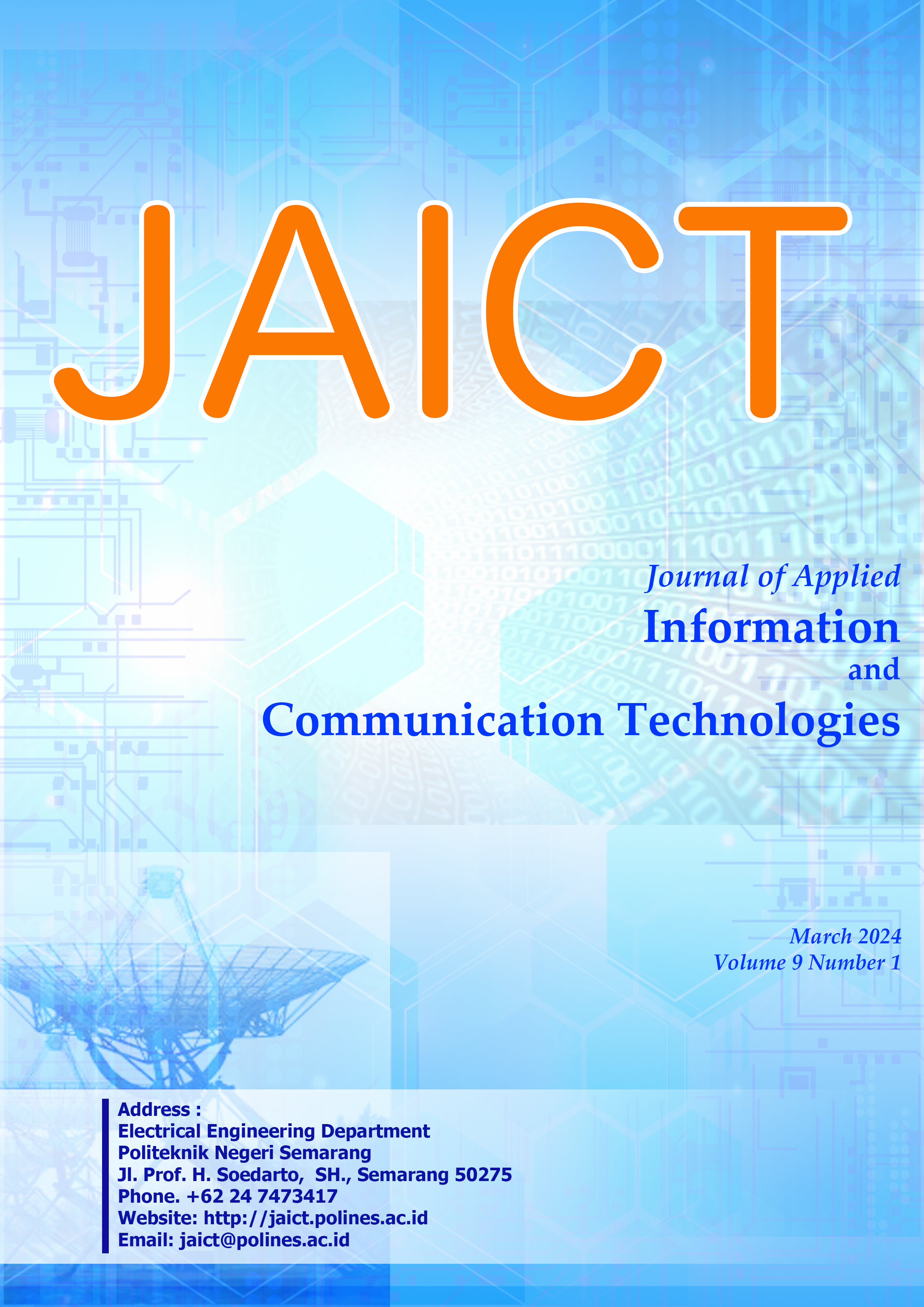Quick Response Anti-Theft Measures in Jewelry Stores and Banks Utilizing the Internet of Things
DOI:
https://doi.org/10.32497/jaict.v9i1.5113Abstract
The act of theft is a prevalent criminal activity within society, particularly observed in financial institutions and jewelry establishments, owing to the significant economic worth associated with valuable assets like currency, gold, and diamonds. Certain locations lack an integrated security system that interfaces with law enforcement, hence posing challenges for victims to report criminal incidents, particularly in cases involving armed or violent attackers. Hence, the purpose of this final project tool is to streamline and expedite theft reporting by leveraging the capabilities of the Internet of Things. This tool gathers empirical data in the form of visual representations, geographical coordinates, and temporal information pertaining to an incident. The development process employs the waterfall methodology, characterized by an average data transmission speed of 21.5 seconds and a database-to-telegram latency time of around 3.85 seconds. The complete duration encompassing the stages of detection and subsequent notification via telegram amounts to approximately 25.35 seconds. The test results indicate a location tolerance of around 5-10 meters relative to the test spot.
Downloads
Published
Issue
Section
License
Authors who publish with this journal agree to the following terms:Authors retain copyright and grant the journal right of first publication with the work simultaneously licensed under a Creative Commons Attribution License that allows others to share the work with an acknowledgement of the work's authorship and initial publication in this journal.
Authors are able to enter into separate, additional contractual arrangements for the non-exclusive distribution of the journal's published version of the work (e.g., post it to an institutional repository or publish it in a book), with an acknowledgement of its initial publication in this journal.
Authors are permitted and encouraged to post their work online (e.g., in institutional repositories or on their website) prior to and during the submission process, as it can lead to productive exchanges, as well as earlier and greater citation of published work (See The Effect of Open Access).






